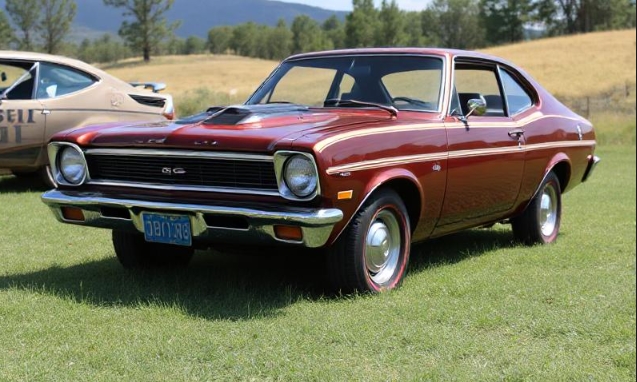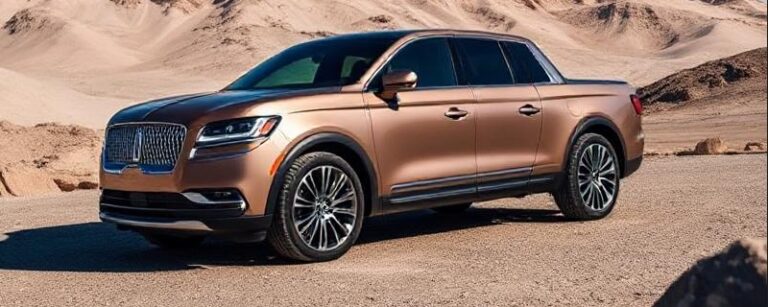From Humble Beginnings to Hot Hatch Hero: The Evolution of the Kia Rio
The Kia Rio. For many, it conjures images of affordability, reliability, and perhaps a touch of understated practicality. Yet, beneath this familiar exterior lies a story of remarkable evolution, a journey spanning over two decades that has seen the humble subcompact transform from a basic utilitarian offering into a stylish, feature-rich, and surprisingly engaging automobile. The Rio’s trajectory mirrors Kia’s own dramatic rise in the global automotive landscape, demonstrating a consistent commitment to improvement, innovation, and delivering exceptional value.
The Dawn of a New Era: The First Generation (2000-2005)
Kia, at the turn of the millennium, was still establishing its foothold in many international markets. The original Rio, launched in 2000, was a crucial component of this strategy. Aimed squarely at budget-conscious buyers, it was designed to be a no-nonsense, affordable mode of transport. Available as both a four-door sedan and a five-door hatchback, the first-generation Rio was characterized by its simple, somewhat uninspired design. Its primary selling points were its low price point and decent fuel economy.
In its debut year, the Rio was offered in two main trim levels, indicative of its basic nature:
- Base: The absolute entry-level model, featuring essential amenities like manual windows, manual door locks, and often a basic AM/FM radio. Air conditioning was typically an optional extra.
- LS: Stepping up, the LS trim added a few creature comforts, such as power windows and door locks, and a slightly more advanced stereo system.
Under the hood, the first generation Rio was powered by a range of small four-cylinder engines, primarily a 1.5-liter unit that produced around 96 horsepower. Later in its production run, a larger 1.6-liter engine became available, offering a modest bump in power. While not a performance powerhouse, the Rio was praised for its forgiving ride and easy maneuverability in urban environments. Its compact dimensions made it ideal for navigating crowded city streets and squeezing into tight parking spaces.
However, the first-generation Rio also faced criticisms regarding its interior quality, which was perceived as somewhat plasticky and lacking in refinement. Safety features were also rudimentary by today’s standards, with airbags being optional on some models. Despite these shortcomings, the Rio established itself as a viable option for those prioritizing cost over luxury, and it laid the groundwork for Kia’s future endeavors.
.
THIS is GOOD stuff if your car is in need:

.
A Step Up in Style and Substance: The Second Generation (2005-2011)
Recognizing the need for improvement, Kia introduced the second-generation Rio in 2005, marking a significant evolution in design, engineering, and overall quality. This generation saw the Rio shed its utilitarian image and embrace a more contemporary and appealing aesthetic. The exterior design became more sculpted and aerodynamic, with sharper lines and larger headlights that gave it a more assertive presence on the road.
The second-generation Rio also broadened its appeal by offering a wider range of trim levels, catering to a slightly more discerning buyer:
- LX: The entry-level trim, still focused on affordability, but often including standard air conditioning and a more integrated audio system than its predecessor.
- EX: A mid-range option that added features like power mirrors, keyless entry, and sometimes cruise control. Upholstery upgrades were also common.
- SX: The top-tier trim, aimed at those seeking a more premium feel. The SX often came equipped with alloy wheels, fog lights, a sunroof, and a more sophisticated sound system.
Powertrain options saw an upgrade as well. The 1.5-liter engine was largely replaced by a more potent 1.6-liter Gamma engine, delivering around 110 horsepower. This provided a noticeable improvement in acceleration and overall driving dynamics. Later in the generation, a 2.0-liter engine was also introduced in some markets, further enhancing performance.
The interior of the second-generation Rio also underwent a significant transformation. Materials felt more substantial, the dashboard layout was more organized, and there was a greater emphasis on ergonomics. Safety also improved, with features like anti-lock brakes (ABS) becoming standard across most models, and the availability of electronic stability control (ESC) in later years. The second-generation Rio was a crucial turning point, demonstrating Kia’s ability to compete more effectively in the subcompact segment.
Global Appeal and Refinement: The Third Generation (2011-2017)
The third generation of the Kia Rio, launched in 2011, solidified the model’s position as a serious contender in the global subcompact market. This generation was particularly significant as it offered distinct versions for different regions, reflecting tailored design and engineering choices. The “Rio 3,” as it was sometimes known, boasted a bold and distinctive exterior design, heavily influenced by Kia’s then-new design language under Peter Schreyer. Its “tiger-nose” grille became a signature element, giving the car a more sophisticated and European-inspired look.
This generation truly expanded the breadth of options available to consumers:
- Base/LX: Still the entry point, offering essential features and a competitive price.
- S/EX: The mid-tier trims, adding comfort and convenience features like improved audio systems, Bluetooth connectivity, and steering wheel-mounted audio controls.
- SX: The flagship trim, often featuring a more powerful engine option, premium cloth or leatherette seating, heated seats, a rearview camera, and advanced infotainment systems with touchscreens.
Engine choices were diverse, with a focus on fuel efficiency and performance. In many markets, the 1.6-liter Gamma GDI (Gasoline Direct Injection) engine became the primary powerplant, producing around 138 horsepower. This engine offered a compelling blend of zest and economy. In some regions, smaller, more fuel-efficient engines, like a 1.4-liter gasoline unit, were also available.
The interior of the third-generation Rio was a masterclass in how far Kia had come. The cabin felt spacious for its class, with high-quality materials and a driver-focused dashboard. The availability of features like a navigation system, heated steering wheel, and automatic climate control demonstrated Kia’s commitment to offering premium amenities in an affordable package. Safety continued to be a priority, with an increasing number of standard safety features, including multiple airbags, ABS, ESC, and traction control. This generation truly elevated the Rio’s standing, proving that practicality didn’t have to come at the expense of style or advanced technology.
The Modern Marvel: The Fourth Generation (2017-Present)
The current, fourth generation of the Kia Rio, introduced in 2017, represents the pinnacle of the model’s evolution. It continues the trend of sophisticated design, advanced technology, and engaging driving dynamics, further blurring the lines between subcompact and premium compact cars. The exterior design is sharper and more athletic, with a lower roofline and a wider stance, giving it a more planted and sporty appearance.
The trim levels offered in the fourth generation reflect Kia’s strategy of providing well-equipped vehicles across its lineup:
- S: The starting point, offering a solid foundation of features including a touchscreen infotainment system, Apple CarPlay and Android Auto integration, and a rearview camera.
- EX: This trim builds upon the S with features like alloy wheels, upgraded interior materials, a more sophisticated driver information display, and potentially keyless entry with push-button start.
- GT-Line (or similar performance-oriented trim): Introduced in later model years, this trim often signifies sportier styling elements, unique wheel designs, enhanced interior accents, and sometimes a more potent engine option, aiming to appeal to those seeking a more dynamic driving experience.
Under the hood, the fourth-generation Rio typically features efficient yet peppy four-cylinder engines. In many markets, a 1.6-liter GDI engine remains the standard, offering a good balance of performance and fuel economy. Kia has also increasingly focused on offering turbocharged variants or exploring alternative powertrains in certain regions, reflecting the evolving demands of the automotive market.
The interior of the current Rio is arguably one of its strongest suits. It boasts a modern and intuitive dashboard layout, with an emphasis on user-friendly technology. The infotainment system is a highlight, offering seamless smartphone integration and a responsive touchscreen. The quality of materials is excellent for the segment, and the overall cabin design feels upscale and premium. Passenger and cargo space are also optimized, making the Rio a surprisingly practical choice for daily use.
Safety remains a paramount concern, with the fourth-generation Rio often coming equipped with an impressive suite of advanced driver-assistance systems (ADAS). These can include forward collision-avoidance assist, lane keeping assist, driver attention warning, and blind-spot collision warning, significantly enhancing occupant safety and providing peace of mind.
Conclusion: A Journey of Continuous Improvement
The Kia Rio’s journey from its utilitarian beginnings to its current status as a stylish, technologically advanced, and engaging subcompact car is a testament to Kia’s relentless pursuit of improvement. Each generation has built upon the strengths of its predecessor, consistently elevating the benchmarks for affordability, quality, and driver satisfaction.
From the basic, no-frills models of the first generation to the sophisticated and feature-packed offerings of today, the Rio has continuously adapted to meet the evolving needs and expectations of consumers. It has not only become a cornerstone of Kia’s global product portfolio but also a compelling choice for buyers seeking a practical, reliable, and surprisingly enjoyable car that punches well above its weight class. The evolution of the Kia Rio is a success story in automotive development, proving that even the most budget-friendly segments can be home to innovation and driving pleasure.







